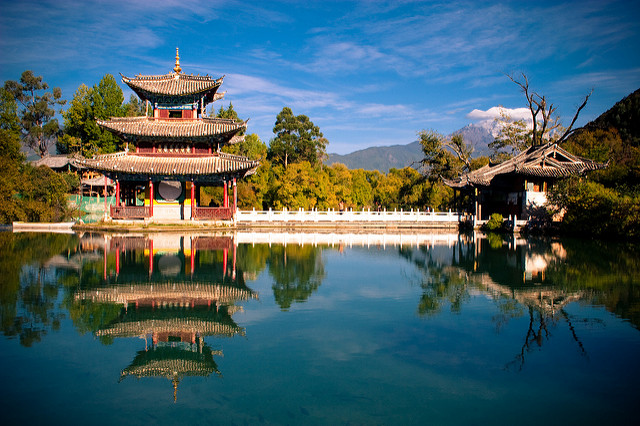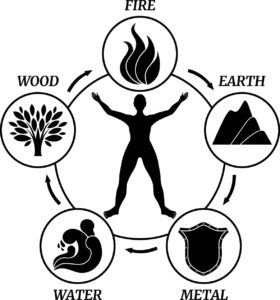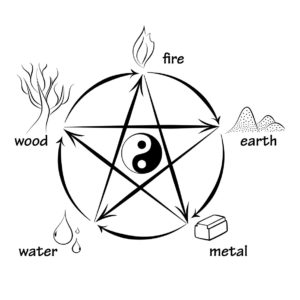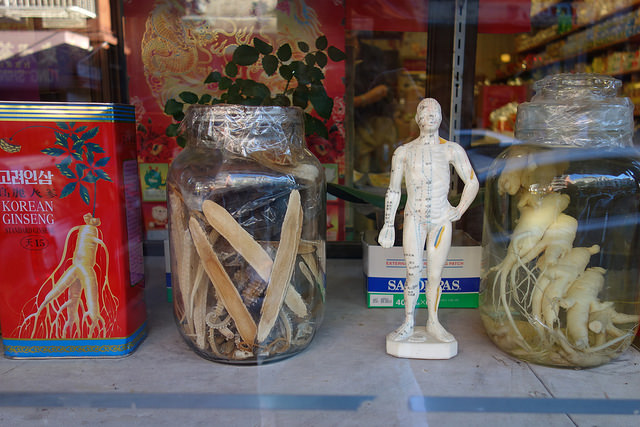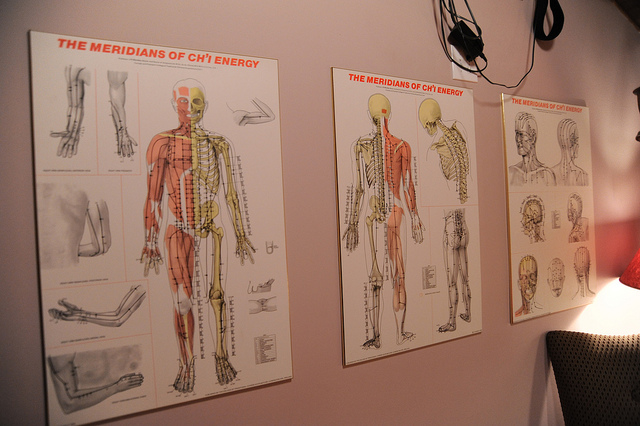
I mentioned in my earlier post “An Introduction to Traditional Chinese Medicine” that I have created a Reiki healing system based on working with the “Five Elements” of Traditional Chinese medicine (TCM). In a series of articles I’m going to be talking about different aspects of the Five Elements and how they impinge on people’s lives: how imbalances in the five elements can show themselves as physical conditions and particular emotions and states of mind.
Last week in “Five Elements: The Basics” I explained how the elements support and control each other through the nourishment and control cycles, and today I’m going to talk about meridians and body ‘organs’ and how they relate to Wood, Fire, Earth, Metal and Water…
The Meridians
Meridians are channels of energy running throughout our bodies, and each meridian is related to a particular body ‘organ’ from which it takes its name. There are twelve major meridians and number of minor meridians related to each organ, and you will have seen diagrams or posters depicting the course of the various meridians over the surface of the human body. Although the majority of the meridians are related to physical organs that we in the West would recognise, not all of them are, and they do not necessarily work on the same physical basis.
For example, there are two ‘organs’ that are unknown to Western physiology: the Pericardium (or Heart Protector) and the Triple Burner, Sanjiao, or Triple Heater. The Pericardium protects the heart from emotional upsets and ‘knocks’, and protects us from external ‘attacks’ such as infections. The Triple Heater harmonises the organs and ensures the safe passage of energy and fluids through our bodies; malfunctioning is seen as causing Chi or body fluids to become blocked in our systems.
The ‘Organs’
The word ‘organ’ does not have the same meaning in Chinese medicine as we would understand in the West when we think of the liver or the heart, for example. Each organ also has a much wider range of associations, characteristics, functions and influence than the physical organs we perceive in the West, and we are going to look at this in more detail later on.
Each ‘organ’ functions on all levels of our body-mind-spirit, part of an overall dynamic energy process.
In the Five Element Reiki system the meridians and particularly the ‘organs’ are important because each organ is allocated to a particular element, so if we want to work on Wood then we can focus energy on the ‘organs’ of Wood: Liver and Gall Bladder, and their associated meridians. We will we be focusing energy on these organs and we will be sending the organ’s characteristic energy through it, intensifying the beneficial effect by making the ‘organ’ and its meridian resonate at its characteristic frequency.
When we work on the Liver and the Gall Bladder we will be sending Wood energy through those organs, to produce balance in Wood on a deep level. We will produce balance in all the various ramifications and associations of Wood: anger, planning, decision-making, the tendons, the eyes, tears, and so on (see later blog posts for discussions of the associations of each element).
Usually two organs represent each element, one Yin organ and one Yang organ, one solid organ and one hollow organ, and listed below are the major meridians/organs and their associated element.
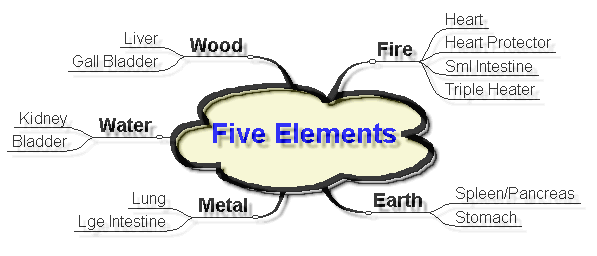
The Yin organs are the solid organs: Liver, Heart, Heart Protector, Spleen/Pancreas, Lung and Kidney. These organs are considered to be deeper in the body and are concerned with the manufacture, storage and regulation of the fundamental substances. They each have an emotion associated with them.
The Yang organs are hollow: Gall Bladder, Small Intestine, Triple Heater, Stomach, Large Intestine and Bladder. These organs are considered to be closer to the surface of the body, and have the functions of receiving, separating, distributing and excreting body substances.
Interestingly, in the same way that one element supports another in a continuous cycle, in TCM one organ/meridian can be seen as supporting the next. So the Heart supports and nourishes the Spleen, and this in turn nourishes the Lungs. The Lungs support the Kidneys, and these nourish the Liver. The Liver supports the Heart and so on.
There are two other meridians outside the element classification, and they run down the front and back of the body in the midline. These meridians will be familiar to those carrying out the ‘microcosmic orbit’ meditation: The Conception and Governing Vessels.
Did you like this blog?
If so, you are going to love this book…
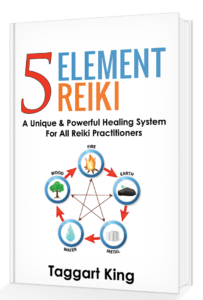
“Excellent and informative book. Great guidance and exercises to follow with ease.
As a 5 Element Acupuncturist and Reiki Master Teacher, I can only say I would have loved this to have been a course support book on my TCM Degree.
It has been a wonderful refresher and one to keep close with those few special books that need picking up all the time. Once started I found I needed to keep reading, it was like a breath of fresh air, the author has gathered and passed on some gems on 5 Elements and Reiki. It has been a pleasure to read and review this book.”
Ann Charlton
Five Element Reiki
A Unique & Powerful Healing System for All Reiki Practitioners
Five Element Reiki is a unique way of working with Reiki. It’s acupuncture without needles, or acupressure without pressing on anything, and without having to learn about or focus on the body’s meridians or their acupoints.
This system, created by Taggart King, is a way of working with the energies of the five elements of Traditional Chinese Medicine so that the meridians and organs ‘resonate’ with the energy you channel, removing blockages and bringing a state of balance on all levels.
You’ll use special symbols and creative visualisation, focus your intent and hone your intuition through a whole series of practical exercises found in this comprehensive guide. You’ll learn the essence of five element theory and understand how imbalances show themselves in your body, emotions and states of mind.
This book will be of interest to anyone who is interested in exploring and experimenting with the energy and who wants to learn a unique and powerful system for self-transformation.
This professionally-printed Reiki book has 292 A5 pages, a glossy soft cover and we will send it to anywhere in the world!
Read the contents list before you order, if you like, by clicking on this link: Table of contents
Book: 292 pages.
Price: £13.99 + p&p
Or Download a PDF version now for only £10.99
Picture credit: Wonderlane

